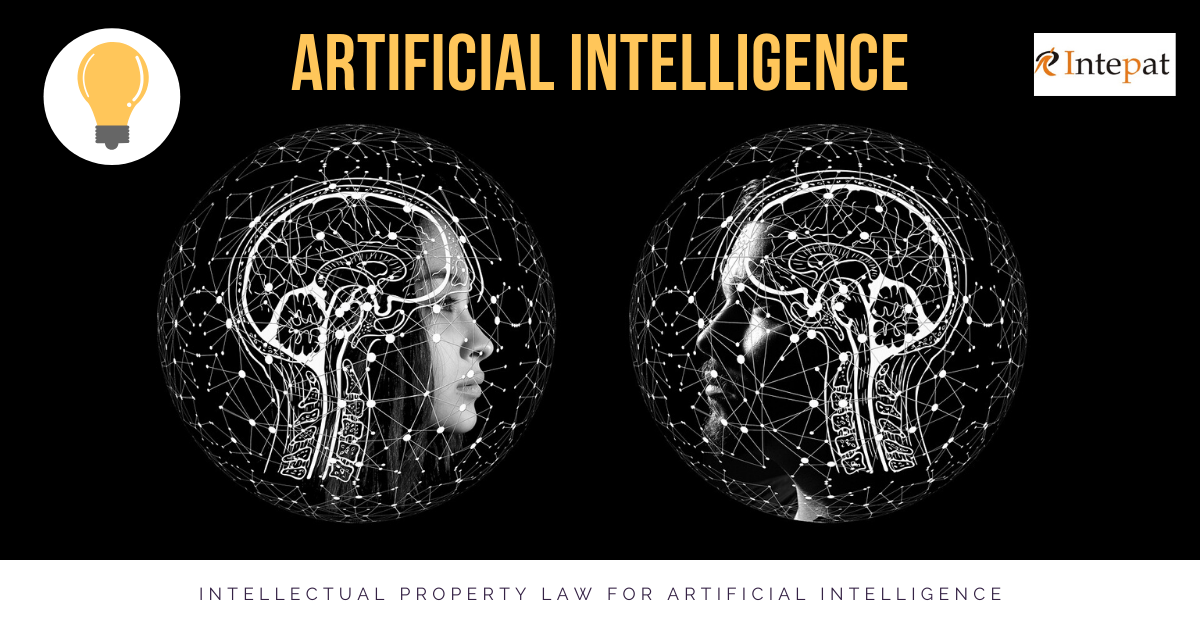Scientists call Artificial Intelligence the fourth industrial revolution. The world is moving fast towards the complete automation of processes ranging from complex tasks to our daily activities. Artificial Intelligence (AI) is simply a set of programs that make a computer smarter. It is so realistic that the output from it looks like an output generated by a human. Right from robots in factories, chatbots in help centers to Alexa in our homes and Siri in our phones, AI is becoming an integrated part of our life.
AI technology sees thousands of innovations as its application spreads to many sectors. AI has entwined our regular life so much that we often do not realize we use AI technology daily. Hence, it is high time that we start addressing our Intellectual Property (IP) laws in the light of AI.
Patents and AI
Generally, patents grant a sense of protection to the rights of the inventor, and it also encourages them to come up with more innovations. This will pave the way for the growth of the sector. Similarly, granting patents for AI-generated works will encourage people to come up with more innovative AI technologies, which in turn would develop the AI sector. Moreover, patents provide transparency to innovations, allowing the commercialization of many valuable products without the fear of infringement or misuse.
However, granting patents for the work of the machine will question the values of the IP system to govern original inventors. Meanwhile, several AI application-oriented projects also face objections when they file for a patent. When AI performs the task, objections usually arise in the grey area of ownership.
To overcome this, in many cases, when the inventor files a patent for an AI-generated work, he mentions the AI tool as the inventor in the patent application. At times, the product’s inventor is not the patent owner. Similarly, the AI application shall be the inventor of the patent application, and the patent owner shall be the AI developer. This will ensure upholding the value of original human inventors and maintaining the integrity of IP rights.
Ownership of AI inventions
Though the AI performs a task, a person can be eligible as an inventor for the task in the following scenarios:
An AI developer can gain inventorship to a patent when he designs an AI to solve a specific problem. Furthermore, the input values and training from the skilled developer should play a crucial role, and the AI should be able to solve the problem only based on the developer’s input.
In some scenarios, an AI may solve a problem. But, the skills of the person are essential to structure and formulate the problem itself, and only then can the AI solve it. Here, the person may gain the inventorship of the invention.
Sometimes, the IP system may also consider giving inventorship to a person if they can identify the optimal solution to solve a problem from a bunch of possible AI-generated solutions.
Copyrights and AI
Initially, the authors used AI as a tool to support their creativity. Hence, there were not many concerns regarding copyrights. But, as AI evolved, it could make several decisions in the creative process without the need for human creativity. Nowadays, AI technology can generate art or text similar to the works of a human. It has already found its way into the gaming, music, and journalism sectors.
If the IP system declares all AI-generated creative works copyright free, it would not be fair for companies that have invested millions in AI platforms. This is because all their original content would be available on the internet for free.
Currently, many countries grant copyrights only to works from human intellectual creation. The US Copyright Office states, “The US Copyright Office will register an original work of authorship, provided that a human being created the work.”
Similarly, the Australian and European Patent Office (EPO), in many instances, have recognized and granted copyrights only to works involving human creation.
Some countries choose to recognize the effort put into creating AI and delivering creative content. Such countries include India, the UK, Ireland, New Zealand, and Hong Kong. Hence, the AI programmer gains the authorship of the creations.
Trademarks and AI
Unlike patents and copyrights, the trademark section of the IP system interacts more with end-consumers. Our existing trademark laws rely primarily on human interpretations to decide if a product can be granted a trademark. Similarly, to prove infringements, the trademark owner has to submit enough evidence against the infringer that there is confusion regarding the services or products. All these data depend on recollection, reviews, and the emotional bond the customers share with the products.
The advent of AI in e-commerce platforms influences the decisions of customers quickly. Nowadays, AI collects data on the preferences of customers, and the data will be their website searches, purchase history, and social media profiles. Besides, the AI uses this data to narrow down and list only specific products and even, at times, order the products. This predictive technology of AI is rapidly shifting shopping culture to shipping-then-shopping.
The principles of trademark laws are durable and will remain if there is an emotional link between the consumers and the products. However, there should be constant checks to assess and interpret the advancements of AI in consumer interactions to maintain the integrity of trademarks.
The AI revolution is making all IP offices to re-visit their Intellectual Property law. We must adopt measures to recognize AI innovations and content created by AI technology. Meanwhile, if we establish lucid regulations now, we can avoid disputes and ensure the smooth functioning of the IP system.




